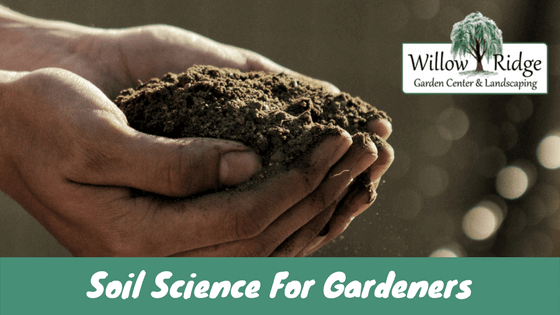Soil Science for Gardeners
My first employment experience at sixteen was at a garden center. It was there that I was introduced to the fine art of watering properly. I was also exposed to the many types of soil amendments and mulches sold in bags for the suburban gardener’s use. I learned that a plant’s success or failure is directly linked to the soil. A plant’s roots must be able to penetrate the soil and extract the necessary water and nutrients to sustain its life. Soil science for gardeners is a simple concept, yet so misunderstood.
There are three soil types: sand, loam, and clay.
Sand
If you’ve ever played in a sandbox you that sand will not hold water. The particles of sand are so angular that their surfaces wont clump together to form a tight mass. Therefore water and nutrients run through it.
Loam
Loam is a soil type that comes to mind when we think about good, rich topsoil. It contains many years’ worth of organic matter (anything that was once alive leaves, dead bugs, or animals, dung, etc.) and it crumbles nicely when worked with hands.
Clay
Clay is the soil type we have in East Tennessee. While it is rich in nutrients, it does not drain well because the clay particles are smooth and net together very tightly. Dig a hole in clay, fill it with water, and watch how long it takes to drain!
Loam is nearly perfect soil and you will rarely experience it. Clay and sand and everything in between must be amended with organic matter. If you are smart enough to compost your leaves and grass clippings, add this to the soil every time you plant. You can buy compost in bulk or in bags at the garden center for your convenience. Soil conditioners composed of finely ground pine bark are proving to be a very successful additive to our clay soil and is our number one recommended amendment. Thoroughly mix 1/3 soil conditioner to 2/3’s of the existing soil when planting.
How To Water
Now that we have “fixed” the soil, we need to figure out how to water. This seems tricky to the new gardener who may not understand the need to thoroughly drench the entire root ball and surrounding soil of the newly planted shrub. Sprinkling for a couple of minutes every day is not going to get it. Watering deeply once a week is better because the roots will grow deeper to seek natural ground water instead of hanging around the soil surface waiting on another daily dose.
To test your watering, get a trowel and gently dig down beside the root ball to feel if the water ran through the bottom of it. Make sure you didn’t over water leaving the roots sitting in water. When the plant seems properly watered, make a mental note of how long you hand watered to achieve this and repeat as necessary. Usually weekly watering is needed for newly planted shrubs and trees. You may have to check it the first couple of weeks to get it right. If a plant goes downhill the first week or two after you purchased it, it is due to improper watering: either too much or too little! Just pay attention.
What should you take away from this mind numbingly boring article on soil science for gardeners? Just repeat the mantra ORGANIC MATTER while planting anything and check your watering technique occasionally. Be one with the garden and most of all have fun.
By: Chris Johnson
Staff Horticulturist

